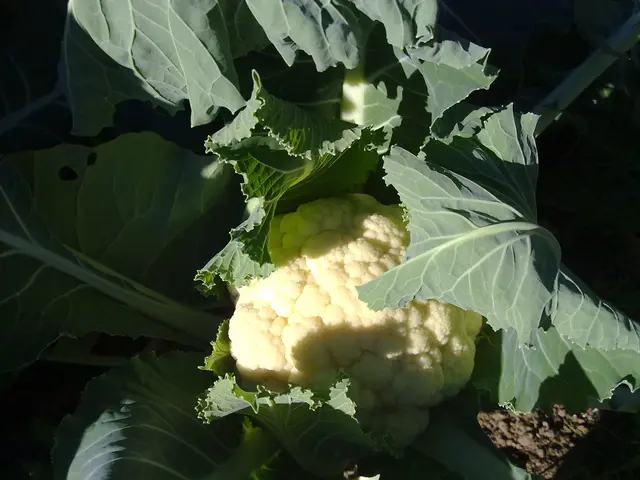Rapid, severe rosacea episode: Understanding causes, signs, and available treatments
Rosacea Fulminans: A Severe and Rare Skin Condition
Rosacea fulminans, often termed pyoderma faciale, is an uncommon and acute inflammatory skin disorder. Typically, this condition surfaces suddenly and affects the central region of the face, including the cheeks, nose, and chin.
Distinguishing characteristics of rosacea fulminans include severe, focal skin discoloration, inflammation, and painful nodules or pustules. These symptoms differ from those seen in rosacea or acne, as they manifest more aggressively and rapidly.
Females of childbearing age predominantly experience rosacea fulminans, though the underlying cause remains elusive. Some evidence suggests possible links between rosacea fulminans and inflammatory bowel disease, as well as pregnancy, although further research is needed. People with a history of any type of rosacea may also be susceptible to this extreme skin condition.
Potential triggers of rosacea fulminans may include emotional stress, hormonal fluctuations, and specific medications. Additionally, a 2021 literature review indicates that certain dietary factors might trigger or exacerbate rosacea symptoms, even though those findings do not pertain specifically to rosacea fulminans.
These potential dietary triggers include spicy foods, alcohol, foods containing cinnamaldehyde (such as chocolate, tomatoes, or citrus fruits), high-histamine foods (like wine, aged cheese, or processed meats), hot drinks, and foods that individuals may have unique sensitivities to. It is essential to note that while these general recommendations are often applied due to symptom overlap, specific food connections to rosacea fulminans have not been firmly established.
Symptoms of rosacea fulminans may encompass dry, burning, or itchy eyes, as well as light sensitivity, although these occurrences are more common in ocular rosacea. Systemic symptoms such as fever and fatigue are rare.
Treatment options for rosacea fulminans may involve oral isotretinoin and corticosteroids, both available by prescription. In some cases, antibiotics combined with corticosteroids and lifestyle changes have aided in resolving symptoms. As certain factors might trigger or worsen rosacea, healthcare professionals may advise identifying and avoiding these triggers via stress reduction techniques, dietary modifications, and gentle skin care practices.
If individuals experience symptoms beyond typical rosacea or acne, such as large, tender nodules, abscesses, significant facial discomfort, or sudden onset of symptoms, it is advisable to consult a dermatologist or another healthcare professional. Similarly, prompt attention is vital for those with symptoms that persist or worsen despite trying over-the-counter medications or rosacea therapies, or who notice eye irritation or inflammation. Additionally, early intervention can help manage symptoms and prevent complications like scarring and infections while potentially reducing associated emotional distress and improving overall quality of life.
In conclusion, rosacea fulminans, an uncommon and extreme form of rosacea, is characterized by sudden, intense facial redness, inflammation, and acne-like lesions. Although the exact cause of this skin condition is not entirely understood, healthcare professionals may apply general rosacea management guidelines due to symptom overlap. Early medical attention is critical for proper diagnosis and treatment, enabling individuals to manage their symptoms and avoid complications effectively. A dermatologist or another healthcare professional will tailor a comprehensive management plan to address each person's unique needs and circumstances.
- A dermatologist may recommend avoiding certain foods like spicy foods, alcohol, cinnamaldehyde-containing foods, high-histamine foods, hot drinks, and foods that individuals might have unique sensitivities to, as these could potentially trigger or exacerbate rosacea fulminans symptoms, although specific food connections have not been firmly established.
- Rosacea fulminans is a severe and rare medical-condition that mainly affects females of childbearing age, with symptoms such as severe, focal skin discoloration, inflammation, and painful nodules or pustules arising suddenly and predominantly on the central region of the face - including the cheeks, nose, and chin.
- In managing rosacea fulminans, healthcare professionals may suggest treatment plans including oral isotretinoin and corticosteroids, prescriptions available only through a doctor. In some cases, a combination of antibiotics, corticosteroids, and lifestyle changes like stress reduction techniques, dietary modifications, and gentle skin care practices, can also aid in resolving symptoms.








